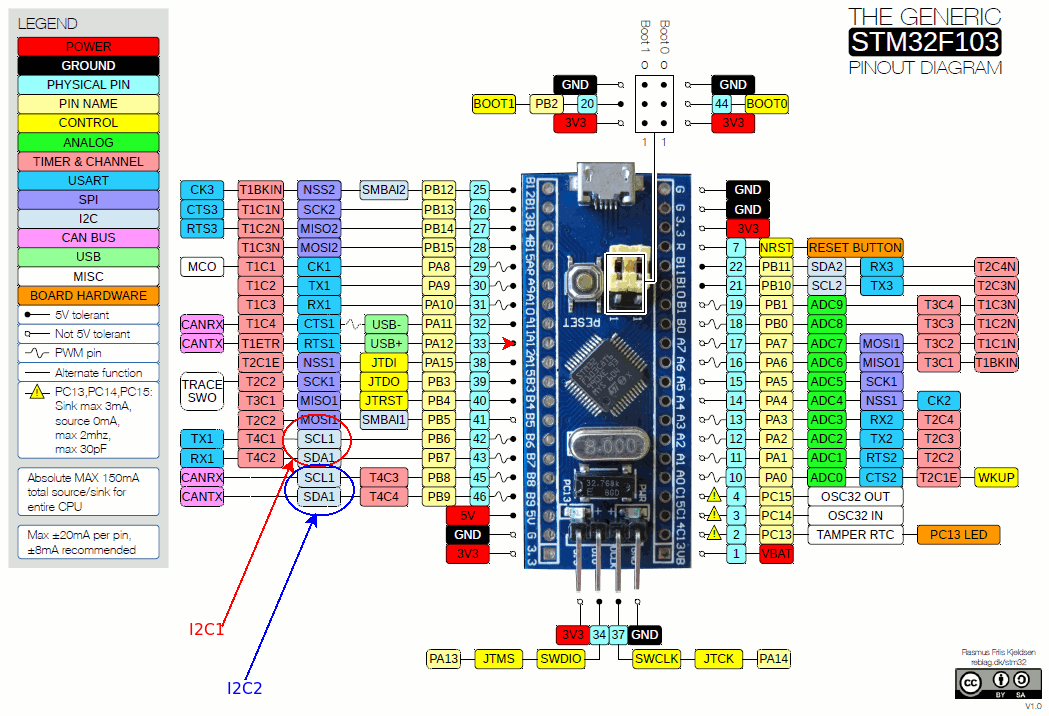The STM32 F7 is part of a series of microcontrollers that have been manufactured by STMicroelectronics, based on the ARM-Cortex M7F core:

Figure 4.3 – The STM32F103 microcontroller pinout with some I2C pins highlighted (see the lower left)
Image Credit: The preceding image, which has been slightly added to by myself, has been taken from https://www.electronicshub.org/wp-content/uploads/2020/02/STM32F103C8T6-Blue-Pill-Pin-Layout.gif. Image by Rasmus Friis Kjekisen. This image falls under Creative Commons CC BY-SA 1.0 (https://creativecommons.org/licenses/by-sa/1.0/).
The Linux kernel supports the STM32 F7 via various drivers and DTS files. Here, we'll take a look at a tiny bit of the code for the I2C bus driver (drivers/i2c/busses/i2c-stm32f7.c) for this microcontroller. It allocates two hardware interrupts:
- The event IRQ line, via the devm_request_threaded_irq...



